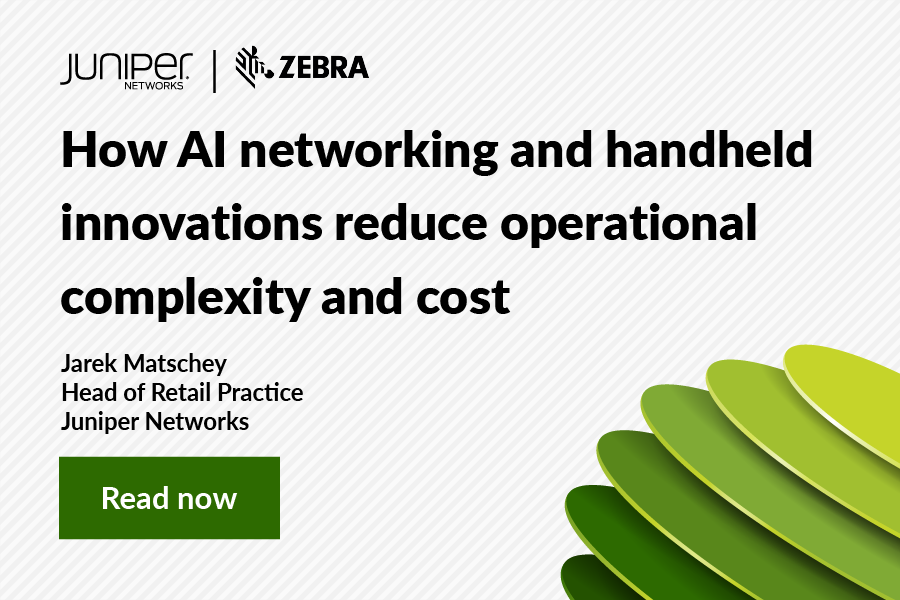Juniper Networks’ virtual Higher Education Summit took place on May 25. Here are six key takeaways from the event, which is now available to watch on demand.
KEY TAKEAWAY 1: Focus on Network Modernization, Digitalization and Transformation.
Technology evolution and innovation is changing cultures and bringing everyone closer together. To deliver on the needs and expectations of students, whether on campus or remotely located, universities must embark on their modernization, digitalization and transformation journey.
Network modernization involves adapting technology to meet the needs of today and tomorrow. Network digitalization enables organizations to leave paper-based and manual systems behind, creating and delivering content anywhere and at any time. Finally, network transformation is all about creating new working approaches, services and processes that deliver positive change long-term.
There are six driving forces that shape the direction of this journey:
- Modern cloud microservices for agility, infinite scale and data processing and integrated business continuity
- Data analytics to translate jumbled data into meaningful insight that drives strategies, improvements and investments
- AI-driven operations to do more with less, reduce costs, improve experiences and reduce risk
- Automation to save time, improve quality, enhance employee satisfaction and reduce costs
- Location services to create and deliver new services and experiences and gain valuable insights to drive positive outcomes
- Experience-first networking to deliver enriched user experiences, assure student satisfaction and drive advocacy and positive reviews.
KEY TAKEAWAY 2: Integrate Data to Derive ROI and Additional Value from the Network
When an institution is locked in with its network vendor, it’s unable to integrate and share data with the specialist higher education tools and platforms that are so important to driving student success.
Juniper’s open API cloud platform plays an essential part in optimizing the value of both network and infrastructure. It enables colleges to choose the right platform for the job, knowing that incremental value will be derived from shared and combined data. For example, SEAtS Software has integrated the Juniper SDK within its platform to harvest Juniper location data, so attendance monitoring can now include a 360-degree student view.
And conversely, by taking the intelligence and insight provided by virtual learning environments such as Moodle, Canvas and Blackboard and overlaying the location data provided by Juniper, the data becomes richer and more meaningful, enabling universities to offer targeted support and services on- and off-campus.
“If we know where the students are, we can create dashboards of attendance which then leads to retention and wellbeing. We can do things like track and trace at least for the next twelve months and make sure students are socially distancing properly and study areas are set up properly with enough space and there are places for students to sit down safely.”
Stuart Brown, Director of Digital Technology Services at Reading University
KEY TAKEAWAY 3: Use Insights to Address Student Health, Wellbeing and Loneliness
Being away from home for the first time and struggling to integrate and adapt to life on campus can be a scary and lonely time for new students.
One in five students will suffer from mental health problems while at university; one in three has experienced an issue for which they needed professional help; and 5 percent of all students often or always feel lonely.
Source: Mental Health Report: Dig-In, 2020, 2019
These statistics are alarming, and institutions are now looking at ways of deploying technology to help address this problem. Juniper’s AI-driven network can be used to identify early indicators that someone may be feeling lonely and spot where there is a potential problem. Interventions could include simple app-based social interactions, invitations to suitable activities and groups or even alerts to university staff to flag that someone may need help. Using technology in this way can help build communities and connections that reach out to students, rather than relying on the individual to make the first approach.
KEY TAKEAWAY 4: Data Can Help Save Energy and Costs
After staffing, utilities are the second largest cost to colleges and universities. Instead of having heating on in every room in every building in winter and air conditioning on everywhere in summer, insight from the network can be used to show occupancy by campus location. If one building only is 30% populated and another is only 10% full, then messages can be pushed to those in one building (or floor), asking them to vacate and directing them to an alternative location. Heating or AC in the now-unoccupied building can then be turned down or (off), saving fuel and reducing costs.
KEY TAKEAWAY 5: Leverage the “TripAdvisor Effect”
Universities now need to be able to prescribe, assure and deliver tailored user experiences based on individual needs. Not only will this ensure that current staff and students are fully supported and can seamlessly access the network and services they need to study and research, it will also support recruitment of the next intake. Prospective students rely heavily on peer reviews when deciding where to apply, so positive coverage of the network experience is essential – and assured user experiences can even turn students into ambassadors.
“Connectivity is absolutely everything to students nowadays. They come along with multiple devices, and we’ve always struggled to onboard those and meet that expectation. So, whether students and staff are at home or on campus we need to deploy fast – and Juniper Mist has enabled us to do that.”
Stuart Brown, Director of Digital Technology Services at Reading University
The traditional service provider model is to measure availability and network performance. Experience-first networking from Juniper moves the needle from simply “being connected” to understanding the quality of the experience actually being delivered to each user, device and application. Juniper Mist makes this possible, measuring 150 states per access point and using AI to measure, troubleshoot and proactively remediate issues across the network. Problems are usually solved before users even notice them.
KEY TAKEAWAY 6: It’s Already Happening
Universities and colleges all over the world are now making decisions that are bringing huge benefits to their institutions and users.
For example, the University of Reading is leveraging the digital revolution to innovate and create new use cases, improve student experiences and deliver operational benefits such as space optimization to reduce operational costs. Stuart Brown, Director of Digital Technology Services, is using Juniper Networks to simplify, standardize, and optimize services across the campus.
“Ultimately, we wanted to make sure that we were producing the services that are really adding value to our students… We’ve achieved things in the last 12 months that I could only have dreamt of doing in five years. The pandemic has had a massive impact – the full campus delivery went online in a matter of six weeks.”
The goal of the University of Cyprus is to be a pioneer research institution and an education centre of excellence for academics in the Euro-Mediterranean region. To reach this pinnacle, it needs a network that is agile and powerful.
“The network infrastructure is incredibly important for our university. We can’t have a smart campus without a smart backbone. We can’t handle complex research projects without the ability to support massive clusters of HPC. We can’t support eLearning and teleworking without a reliable and progressive internet edge. With Juniper, it became possible to do things we couldn’t do before.”
Marios Fokas, Head of Networks Sector, IT Infrastructure Service, University of Cyprus.
The university has already benefited from faster speeds, improved resilience and capacity, and can now move forward with its projects and institutional goals. Previously, the IT team needed additional staff to help run the old, complex network. Now, with Juniper automation, additional staff can introduce new network services to the university to meet the demands of today and build the smart and safe campus of tomorrow. This includes new student residential facilities, which will have smart lighting, heating and water, as well as all the amenities of highly available fast internet and superior application performance.
“Having an advanced network from Juniper is like finally getting a road from the port to the city. Now we can enjoy all the things coming in from the port that we couldn’t access before. We can add new applications and move toward becoming a smart campus. The Juniper network opens all sorts of possibilities for an incredible future.”
Christos Charalambous, Head of IT Infrastructure Service, University of Cyprus
In a world where the connectivity experience is measured by the voice of the student, delivering service extends far beyond just being connected. The right technology is paramount and today’s investments need to look beyond the network to align with the institution’s vision, values and strategic journey.
More Resources
Watch the entire Retail Summit on demand (90 minutes)
The Network Infrastructure Revolution in Education
IT Infrastructure Enabling Successful Transition of Universities into the Next Normal
Subscribe to our Higher Education newsletter


